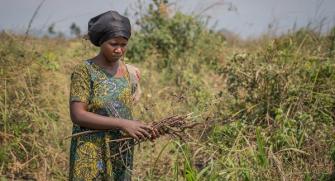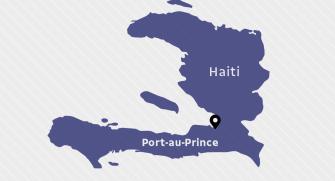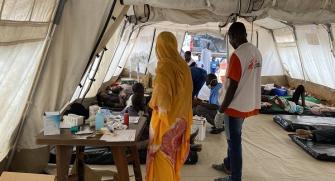Population health assesments
Knowledge of the health status of a population is essential information for defining a health program and its priorities, for Médecin Sans Frontières (MSF) as well as for other stakeholders. This information is crucial in emergency situations and highly unstable situations. It must be obtained rapidly in order to diagnose the situation, so that appropriate programs can be put into place and adapted to the situation.
The data used to evaluate the health state of a population are obtained by investigations and surveillance systems
Mortality and essential information for guiding and adjusting priorities
Surveys
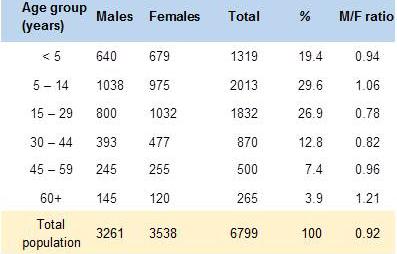
Mortality rates, especially the overall mortality and the mortality of children under 5, are used to evaluate the seriousness of the situation. These indicators have to be considered in the context of previous mortality rates and the mortality data for the host population when displaced people (refugees or internally displaced people) are concerned.
Most often, this information also includes:
- Demographic information (number of people, sex ratio, age distribution); see for examples in table and graph. This information is particularly useful for identifying populations that are in need of pediatric programs (e.g. vaccination);
- Vaccine coverage for the main pathogens responsible for epidemics with a high risk of morbidity and mortality (measles, meningitis, cholera, yellow fever, etc.);
- Nutritional status of children under 5;
- Prevalence of certain severe diseases, whether communicable or not;
- Aid already provided;
- Data on hygiene and sanitation (shelters, how many liters of water per person and per day, number of latrines, etc.).
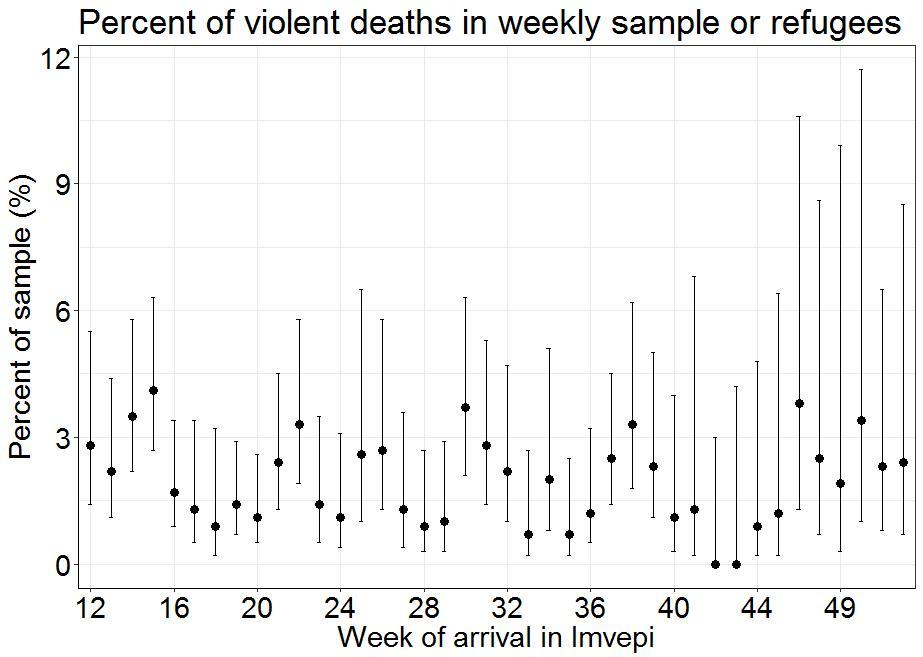
An analysis of the context, which guides the choice of which information to collect:
- Ongoing epidemics (in the relevant region or nearby);
- Presence of malaria (within the displaced population and the host population);
- Description of the new arrivals (violence experienced, health state including mental health), see figure;
- Predicted population movements in the future, etc.…
The indicators are chosen along with the MSF operational teams, and must combine speed and reliability in order to best guide operational priorities.
Adapting the methodology based on the situation
The methodology is chosen based on the speed required and the necessity of obtained reliable results in order to guide operations or communicate with other parties. This involves a delicate balance, which requires a good understanding of the relevant regions and the needs associated with the situation.
Results and communication needs
The preliminary results, and then the definitive results, must be reported and discussed with the teams in the field and at MSF headquarters. They must also be shared with the health authorities and with other organizations that are active in the same region.
Surveillance: trends and alerts
Very often, a surveillance program is put into place following a health evaluation in order to track trends and provide alerts when needed; other complementary, targeted investigations can also be carried out to provide a more detailed evaluation of the health state of the studied populations and the impact of the health programs.
The table above shows the origins of South Sudanese refugees in Uganda. This information can help predict when new refugees will arrive at the camps in the future.
Information and action
Studying the health state of a population is part of field epidemiology. These studies are primarily descriptive studies, carried out via cross-sectional field investigations.
Since its creation in 1986, Epicentre has worked in many contexts in which this information has been indispensable (South Sudan, Somalia, Democratic Republic of Congo, Bangladesh, Yemen, Haïti, Chad, Nigeria, Iraq, etc.). These studies are most often carried out in the context of population displacements, but can also take place in conflict or epidemic situations. These studies require the rapid deployment of epidemiologists. Responsiveness and adaptation to constraints and needs in the field are vital for providing reliable data, analyses and interpretations as quickly as possible, in order to better guide health activities and communication.







